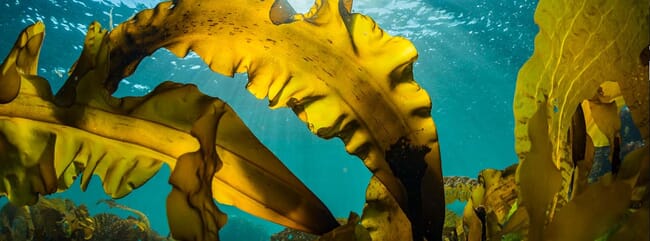
So argues a new report from the US National Academies of Sciences, Engineering, and Medicine, called “A Research Strategy for Ocean-Based Carbon Dioxide Removal and Sequestration”.
As the report outlines, current levels of CO2 emissions greatly exceed the ability of nature to remove it from the environment, and reducing carbon emissions alone may not be enough to stabilize the climate. A 2019 National Academies report found that to meet climate goals, carbon dioxide removal technologies and strategies will need to remove roughly 10 gigatons of CO2 every year by 2050. While several land-based strategies — such as storing carbon in agricultural soil or changing forest management — may be ready for deployment, less is known about the risks, benefits and trade-offs of implementing ocean-based strategies.
The new report recommends new research to better understand overarching challenges for ocean-based CO2 removal approaches, including the potential economic and social impacts. A ten-year programme should systematically examine the trade-offs and interactions between ocean-based approaches with other negative emissions technologies, and with other climate change mitigation efforts.
The programme should develop and adhere to a common code of conduct that emphasises transparency and public engagement; improve understanding of the social impacts; set the stage for permitting and a new regulatory environment that could allow for responsible research; collaborate with indigenous and other communities; and promote international cooperation in research and governance. This research should aim to develop an unbiased and improved base of knowledge about ocean-based CO2 removal for the public, stakeholders, and policymakers to use — not to advocate for or lock in deployment of any specific approach.
The committee that wrote the report also assessed six specific approaches, evaluating their efficacy, durability, scalability, potential environmental risks, social considerations, and how much is known about each so far, among other factors. For each approach, the report recommends research priorities and estimates the additional cost of the next steps for research over the next five to 10 years.
“Ocean carbon dioxide removal strategies are already being discussed by scientists, non-governmental organizations, and entrepreneurs as potential climate response strategies,” said Scott Doney, chair of the committee and professor in environmental sciences at the University of Virginia, in a press release. “Right now, society and policymakers do not have the information they need to evaluate the impacts and trade-offs of these climate responses. If we want to make fully informed decisions about the future of our ocean and climate, we need to complete some very critical research in the next decade.”
1. Nutrient fertilisation
This approach adds nutrients such as phosphorus or nitrogen to the ocean surface to increase photosynthesis by phytoplankton, thereby increasing the uptake of CO2 and transfer of carbon to the deep ocean, where it can stay for a century or longer. The report says there is medium to high confidence that this approach will be effective and scalable, with medium environmental risks and with low scale-up costs beyond the costs for environmental monitoring. The report estimates $290 million will be needed for research priorities, including for field experiments and to track carbon sequestered as a result.
2. Artificial upwelling and downwelling
Upwelling moves cooler, more nutrient- and CO2-rich deep water to the surface, stimulating the growth of phytoplankton, which absorb atmospheric carbon dioxide. Downwelling moves surface water and carbon to the deep ocean. The report says there is low confidence in the efficacy and scalability of these approaches, and that they carry medium to high environmental risks, with high costs and challenges for carbon accounting. The report estimates $25 million would be needed for research priorities, such as technological readiness and limited and controlled ocean trials.
3. Seaweed cultivation
Large-scale seaweed farming that transports carbon to the deep ocean or into sediments has medium efficacy and medium to high durability for removing atmospheric CO2, the report says, but medium to high environmental risks. The report estimates $130 million for priority research to understand technologies for efficient large-scale farming and harvesting, the long-term fates of seaweed biomass, and the environmental impacts.
4. Ecosystem recovery
Carbon removal and sequestration through protection and restoration of coastal ecosystems and the recovery of fish, whales, and other marine wildlife — which the report says could have low to medium efficacy — comes with the lowest environmental risks among the assessed approaches, and high co-benefits. The report estimates $220 million for research priorities, including to study effects on macroalgae, marine animals, and marine protected areas.
5. Ocean alkalinity enhancement
This approach chemically alters ocean water to increase its alkalinity in order to enhance reactions that take up atmospheric CO2. The report says there is high confidence in its efficacy. Ocean alkalinity enhancement carries medium environmental risks and medium to high scale-up costs. The report estimates $125 million to $200 million for priority research, including field and laboratory experiments to explore the impact on marine organisms.
6. Electrochemical processes
By passing an electric current through water, these processes can either increase the acidity of seawater in order to release CO2, or increase the alkalinity of seawater to enhance its ability to retain CO2. According to the academy, there is high confidence in its efficacy, and medium to high confidence in its scalability, but this approach carries the highest scale-up cost of any of the approaches assessed — and medium to high environmental risks. The report estimates $350 million for priority research, including for demonstration projects and to develop and assess improved materials.




